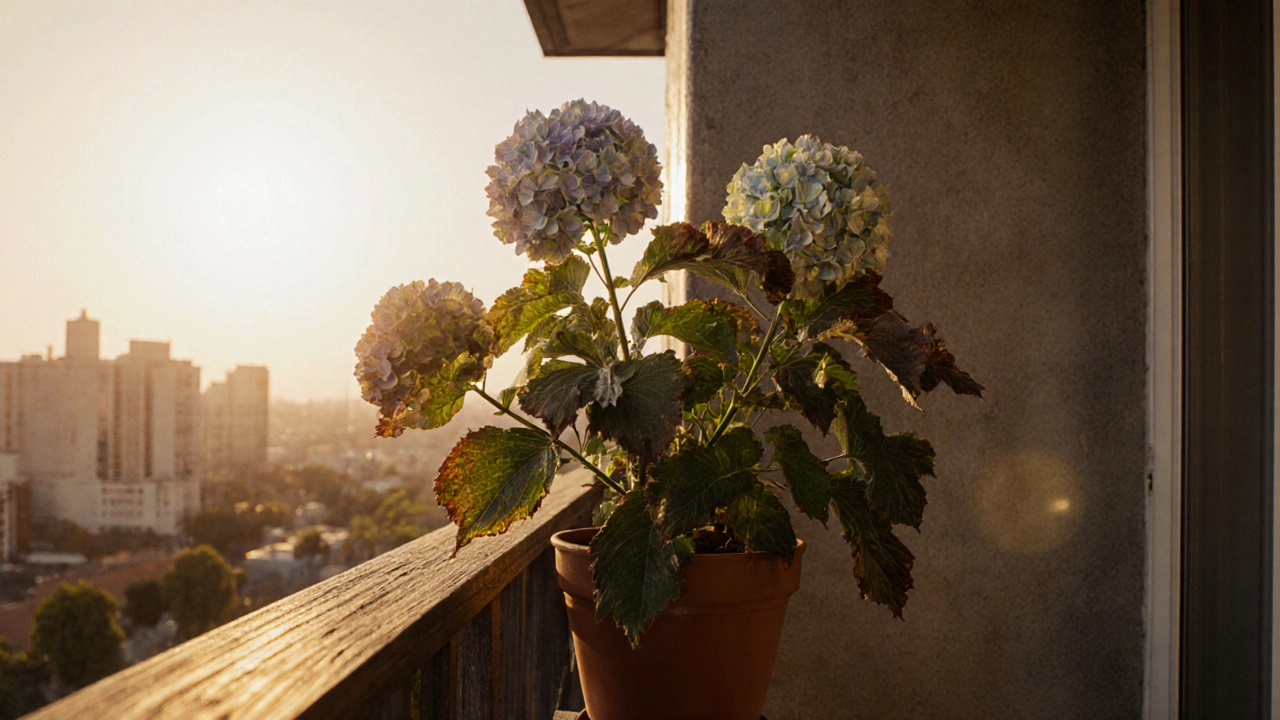Hydrangeas thrive on balconies-but only if planted in the right spot. Avoid afternoon sun, heat surfaces, poor drainage, and small pots to keep your blooms healthy and full.
Sun Exposure for Hydrangeas: How Much Light Do They Really Need in India?
When it comes to sun exposure for hydrangeas, the amount and intensity of sunlight a hydrangea receives directly controls whether it flowers heavily or stays bare. Also known as light requirements for hydrangeas, this isn’t just about getting sunlight—it’s about matching the right kind of light to India’s harsh summers, monsoon rains, and regional temperature swings. Most people think hydrangeas love full sun like roses or marigolds. That’s a mistake. In India, where temperatures regularly hit 40°C and the sun beats down for 8+ hours a day, too much direct light scorches leaves, wilts blooms, and stresses the plant into silence. Hydrangeas don’t just need light—they need the right light.
Partial shade, a mix of morning sun and afternoon protection, is what most hydrangeas crave in Indian gardens. Think of it like this: eastern-facing balconies or spots under a neem tree that lets in dappled light are ideal. Western exposure? Avoid it unless you’re using a shade cloth. Even in cooler hill stations like Ooty or Darjeeling, midday sun can still be too intense. And don’t assume shade means no sun at all—hydrangeas still need 3–4 hours of gentle morning sun to trigger blooming. Without it, you’ll get lush green leaves but no flowers. It’s a common trap: people think they’re protecting the plant by putting it in deep shade, but they’re just starving it of bloom energy. Soil moisture, closely tied to sun exposure, is the second half of this equation. High sun increases water loss, and hydrangeas hate dry roots. In cities like Mumbai or Hyderabad, where the air is hot and dry even in winter, plants in full sun need watering every other day. In shaded spots, you might only need to water twice a week. The trick? Match your watering schedule to the light your plant gets—not the calendar. And if you’re growing hydrangeas in pots on a terrace? You’re fighting two battles: heat reflection from concrete and faster soil drying. A light-colored pot and a layer of mulch can cut water loss by half.
What about indoor hydrangeas? They’re possible—but tricky. Most homes in India don’t have the bright, indirect light hydrangeas need. A north-facing window might work in winter, but in summer, even that can be too dim. If your plant is indoors and not blooming, it’s likely not getting enough light, not too much. Move it to a balcony with filtered sun for a few weeks, and you’ll often see buds form within 30 days. Don’t rely on artificial grow lights unless you’re serious—LEDs rarely give the full spectrum hydrangeas need to flower properly.
Below, you’ll find real-world advice from gardeners who’ve cracked the code on hydrangeas in India—whether they’re growing them in Chennai’s humidity, Delhi’s dust storms, or Bangalore’s mild climate. No fluff. No theory. Just what works when the sun is hot and the monsoon hits hard.
